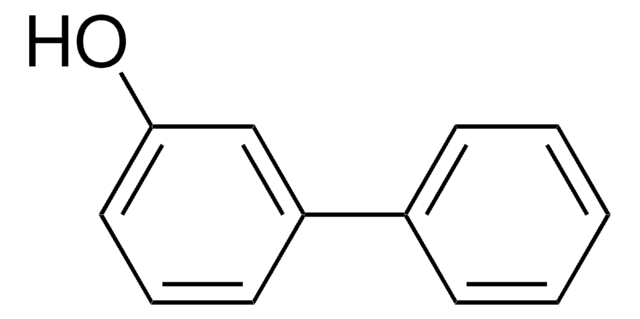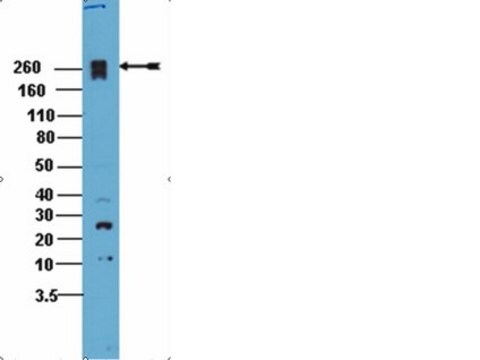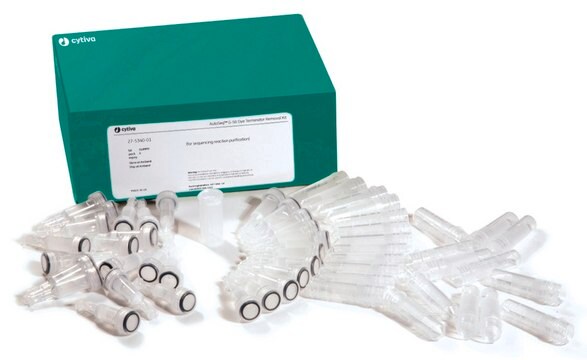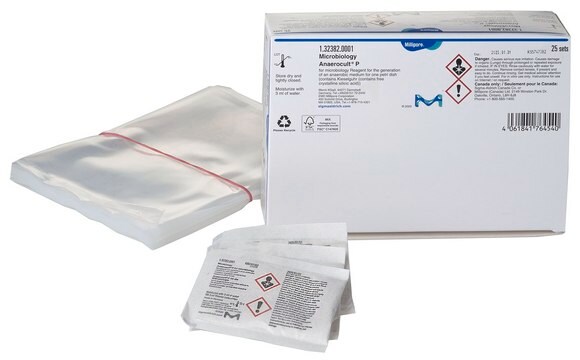3018
Transcreener® UDP2 FP Assay
Sinonimo/i:
Transcreener assay
Autenticatiper visualizzare i prezzi riservati alla tua organizzazione & contrattuali
About This Item
Codice UNSPSC:
41122100
NACRES:
NA.84
Prodotti consigliati
Condizioni di spedizione
dry ice
Temperatura di conservazione
−20°C
Descrizione generale
The Transcreener® UDP2 FP Assay is a universal biochemical HTS assay for enzymes that produce UDP, including glycosyltransferase, galactosyltransferase, glucuronyltransferase, N-acetylglucosamyltransferase, N-acetlygalactosyltransferase, xylosyltransferase, and glycogen, cellulose, lactose and hyaluronan synthases. Enzyme activity is signaled by a decrease in fluorescence polarization as the bound tracer is displaced from the Transcreener® UDP2 Antibody. The assay is a simple single step mix-and-read format enabling the use of unmodified native substrate concentrations of 1 – 1000 μM. The assay provides excellent signal at low substrate conversion, with a Z′ =0.7 and =100 millipolarization shift (mP) under normal reaction conditions.
View full Transcreener® product list
View full Transcreener® product list
Quantità
3018-1K = 1,000 assay, 384-well
3018-10K = 10,000 assay, 384-well
3018-10K = 10,000 assay, 384-well
Stato fisico
Kit with buffered aqueous solutions
Note legali
Transcreener is a registered trademark of BellBrook Labs
Scegli una delle versioni più recenti:
Certificati d'analisi (COA)
Lot/Batch Number
Non trovi la versione di tuo interesse?
Se hai bisogno di una versione specifica, puoi cercare il certificato tramite il numero di lotto.
Possiedi già questo prodotto?
I documenti relativi ai prodotti acquistati recentemente sono disponibili nell’Archivio dei documenti.
Traci E Battle et al.
Blood, 102(8), 3016-3024 (2003-07-12)
Bryostatin 1 is known to exhibit in vitro and in vivo activity against chronic lymphocytic leukemia (CLL) cells by inducing their further maturation into plasma-like cells. Signal transducer and activator of transcription (STAT) proteins play a central role in B-lymphocyte
Dennis S Metselaar et al.
EBioMedicine, 50, 81-92 (2019-11-19)
Pediatric high-grade gliomas (pHGG) are the leading cause of cancer-related death during childhood. Due to their diffuse growth characteristics, chemoresistance and location behind the blood-brain barrier (BBB), the prognosis of pHGG has barely improved in the past decades. As such
Il team dei nostri ricercatori vanta grande esperienza in tutte le aree della ricerca quali Life Science, scienza dei materiali, sintesi chimica, cromatografia, discipline analitiche, ecc..
Contatta l'Assistenza Tecnica.








